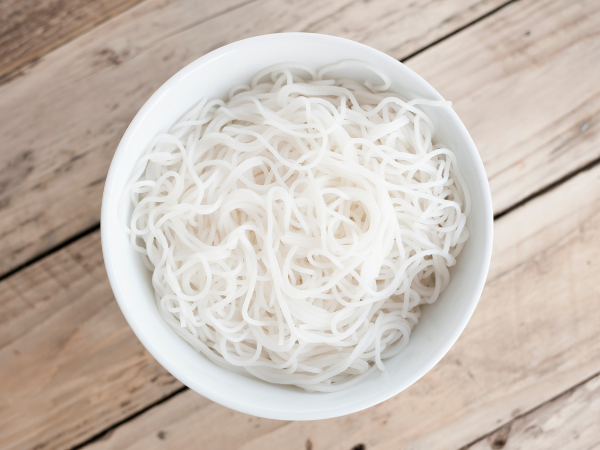Grass noodles, also known as wheatgrass noodles or green noodles, are typically made by incorporating wheatgrass juice or powder into the noodle dough. Wheatgrass is known for being highly nutritious, and when incorporated into noodles, it can offer several health benefits.
Nutritional Information (per 100g serving, approximate)
- Calories: 340 kcal
- Protein: 12-14g
- Carbohydrates: 70-75g
- Dietary Fiber: 3-4g
- Sugars: 1-2g
- Fat: 1-2g
- Saturated Fat: 0.3g
Grass Noodles Vitamins and Minerals
- Vitamin A: 100-200 IU (from wheatgrass)
- Vitamin C: 2-4 mg
- Calcium: 20-30 mg
- Iron: 1.5-2.5 mg
- Chlorophyll: Present in small amounts due to wheatgrass
Grass Noodles Health Benefits
- Rich in Antioxidants: Wheatgrass is known for its antioxidant properties, which help in reducing oxidative stress.
- Source of Fiber: Helps in digestion and maintaining a healthy gut.
- Boosts Immunity: Due to the presence of vitamins, minerals, and chlorophyll from wheatgrass.
- Low in Fat: Ideal for low-fat diets.
The exact nutritional content may vary depending on the specific brand or recipe used for the grass noodles.
Variations
Grass noodles can come in various forms and flavors, depending on the ingredients used alongside wheatgrass. Here are some popular variations:
1. Wheatgrass Udon Noodles
- Base: Traditional udon noodles made with wheat flour.
- Variation: Wheatgrass powder is mixed into the dough, giving the noodles a green hue and added nutrients.
- Texture: Thick and chewy, typical of udon noodles.
- Flavor: Mild with a slight earthy undertone from the wheatgrass.
2. Spinach and Wheatgrass Noodles
- Base: Combination of spinach puree and wheatgrass powder.
- Variation: Both spinach and wheatgrass provide a rich green color and boost in vitamins like A and C.
- Texture: Smooth and firm, similar to regular noodles.
- Flavor: Slightly more vegetal, with a combination of spinach and wheatgrass flavors.
3. Gluten-Free Wheatgrass Noodles
- Base: Rice flour or other gluten-free alternatives.
- Variation: Wheatgrass powder is added to make the noodles nutritious without gluten.
- Texture: Softer and slightly more delicate than wheat-based noodles.
- Flavor: Light and slightly grassy.
